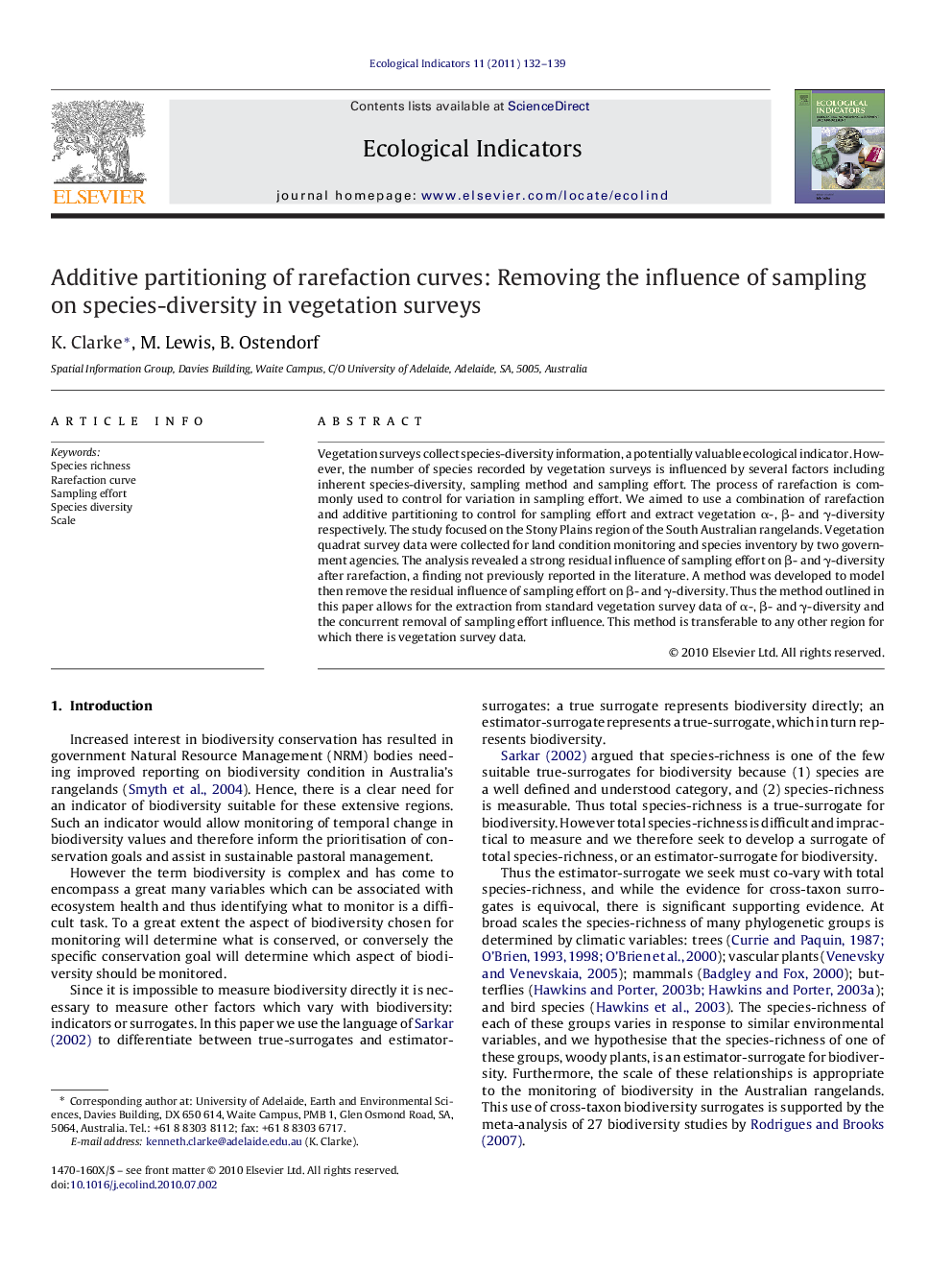| Article ID | Journal | Published Year | Pages | File Type |
|---|---|---|---|---|
| 4374186 | Ecological Indicators | 2011 | 8 Pages |
Abstract
Vegetation surveys collect species-diversity information, a potentially valuable ecological indicator. However, the number of species recorded by vegetation surveys is influenced by several factors including inherent species-diversity, sampling method and sampling effort. The process of rarefaction is commonly used to control for variation in sampling effort. We aimed to use a combination of rarefaction and additive partitioning to control for sampling effort and extract vegetation α-, β- and γ-diversity respectively. The study focused on the Stony Plains region of the South Australian rangelands. Vegetation quadrat survey data were collected for land condition monitoring and species inventory by two government agencies. The analysis revealed a strong residual influence of sampling effort on β- and γ-diversity after rarefaction, a finding not previously reported in the literature. A method was developed to model then remove the residual influence of sampling effort on β- and γ-diversity. Thus the method outlined in this paper allows for the extraction from standard vegetation survey data of α-, β- and γ-diversity and the concurrent removal of sampling effort influence. This method is transferable to any other region for which there is vegetation survey data.
Related Topics
Life Sciences
Agricultural and Biological Sciences
Ecology, Evolution, Behavior and Systematics
Authors
K. Clarke, M. Lewis, B. Ostendorf,
